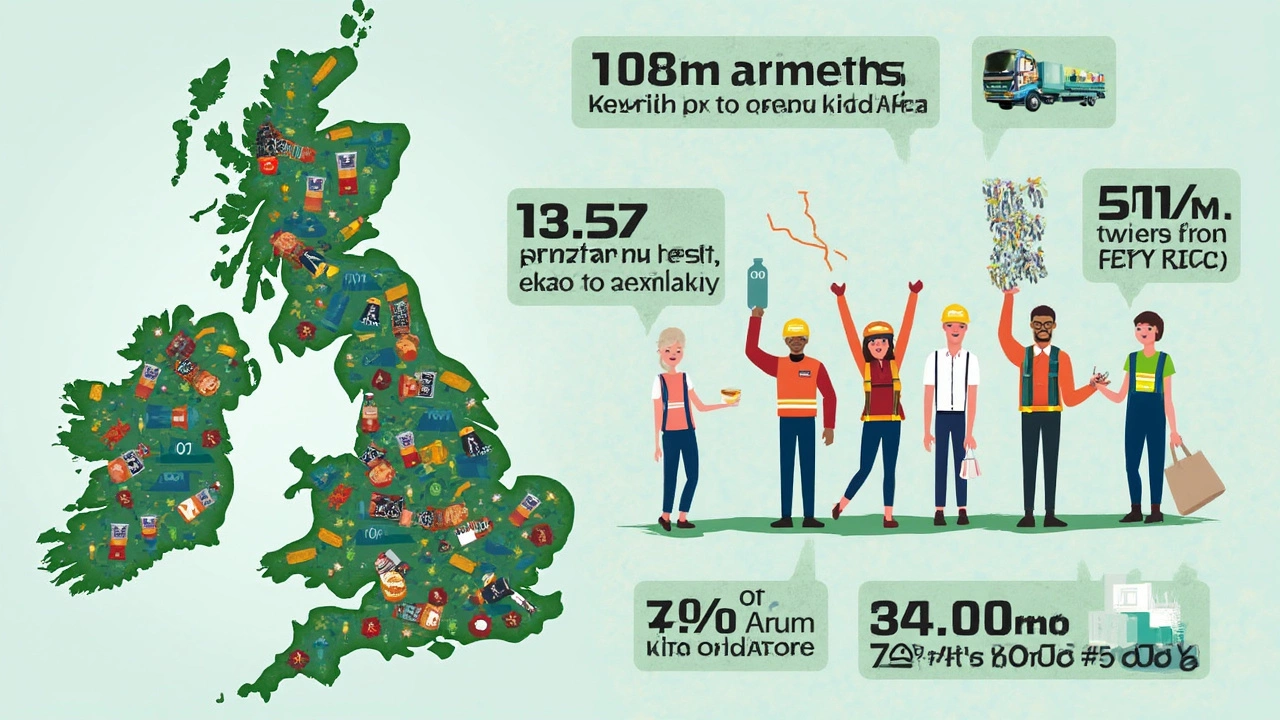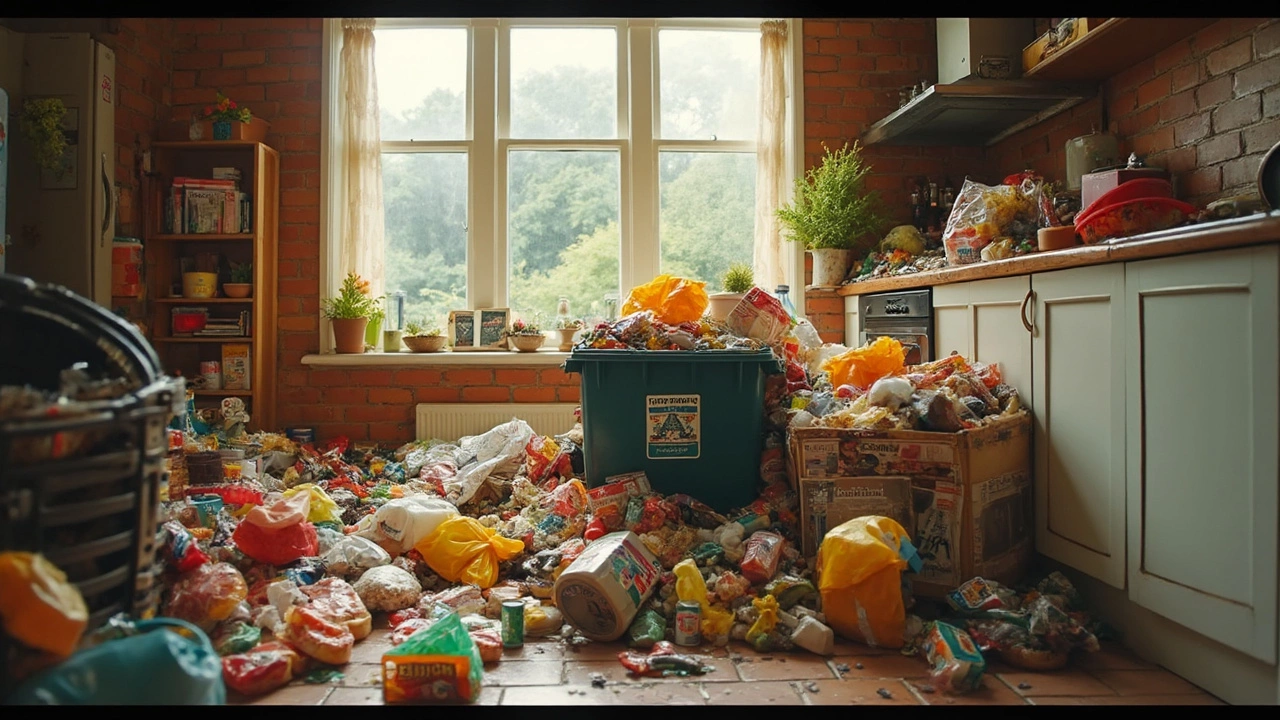Ever tried to picture all the trash from every person on the planet smashed into one gigantic, weird-smelling mountain? It’s a disturbing image that gets under your skin—and here’s something wild: the most common waste product on Earth isn’t plastic bottles, it isn’t food scraps, and it isn’t even paper. The undisputed king of all human waste is, quite simply, organic waste. If this surprises you, you’re definitely not alone. Most people think plastic is the main culprit. But step into the messy world of global waste, and you’ll see that our food, yard clippings, and everyday organic leftovers outnumber everything else by a long shot.
Breaking Down the Biggest Waste: What Is It and Where Does It Come From?
Let’s get real: we’re surrounded by junk we don’t want, but most of it starts as something useful or tasty. Organic waste—uneaten food, fruit peels, meat scraps, coffee grounds, soggy cereal, eggshells, and even fallen leaves and grass—makes up the largest share of what heads to dumps worldwide. According to a massive 2023 study by the World Bank, about 44% of all landfill waste on the planet comes from organic stuff like food and yard debris. That’s more than anything else we throw away, even when you lump plastics and paper together.
So why is this a big deal? Unlike bottles or cans, this waste rots pretty quickly. When organic waste hits the dump, a lot of it doesn’t break down in a good way—it often decomposes without oxygen, producing methane. Methane is a greenhouse gas that's 28 times more potent than carbon dioxide over a century. The average American tosses about 220 pounds of food each year. If we gathered the world’s annual food waste, it would fill over 1,000 Empire State Buildings. This isn’t just gross: it’s expensive, wasteful, and a big chunk of why climate change feels so overwhelming. Here’s a quick look at what the mix looks like around the world:
| Type of Waste | Percent of Total Global Waste |
|---|---|
| Organic (food, yard) | 44% |
| Paper/Cardboard | 17% |
| Plastic | 12% |
| Glass | 5% |
| Metal | 4% |
| Other | 18% |
If you’re like me and you have kids—my daughter Ainsley is a pro at turning up her nose to perfectly good broccoli—you know that the fight against food waste starts right at the dinner table. But the problem runs way deeper than picky eaters or throwing out leftovers.
Why Does Organic Waste Matter So Much?
You’d think tossing apple cores, eggshells, or coffee filters would be harmless. But the impact is bigger than it looks. Methane from landfills is responsible for about 20% of worldwide methane emissions. And it doesn’t stop at air pollution. Rotting food also leaks liquids called leachate, which can seep into groundwater and even push chemicals out of other trash. That makes drinking water risks a lot more real for millions of people, especially in poorer countries with bad infrastructure.
Globally, nearly a third of all food produced—over 1.3 billion tons every year—ends up getting trashed. That’s not just a waste of meals; it’s a waste of all the water, land, energy, and money it took to make it. Picture this: for every cheeseburger thrown away, 600 gallons of water (used to grow crops and raise livestock) quietly slip down the drain too. Shocked? I was, especially when I tried replicating the numbers with a week’s worth of leftovers at home. It adds up in an ugly way.
Worse, many cities don’t have separate ways to handle food and yard waste, so everything just gets squished together in the same bin. This mixes up stuff that could actually help the planet when recycled or composted. It’s a missed opportunity, and a huge one.

How Our Waste Habits Affect Us—And Everyone Else
When we think about waste, we usually imagine what disappears from our curbside bins. But that’s only the start of the story. Organic waste affects our communities, economies, and even how we feel at home. Have you ever noticed that summertime trash pickup seems more... smelly? That nasty odor isn’t just unpleasant—those gases can affect indoor and outdoor air quality, especially in dense city neighborhoods.
Food waste is also tough on families’ budgets. Studies from the USDA estimate the average American family of four throws away $1,500 in uneaten food every year. That’s like tossing out a vacation for four, right into the can. And while some towns run composting programs, most waste still ends up in landfills, where recovery is next to impossible. Globally, all this waste costs around $1 trillion a year—just in lost goods. Not to mention climate impacts that show up as bigger grocery bills, weird weather, and, sometimes, food shortages.
Kids pick up on waste habits fast, too. My daughter’s little science project about “how quickly a peach pit breaks down” ended with her becoming the family’s self-appointed compost cop. It’s made me rethink everything I scrape off plates, knowing how fast bad habits can spread.
Communities are starting to pay attention. Some towns run pilot programs for curbside compost bins. Others try to ban yard waste from dumps altogether. A few European cities actually incinerate organic waste to create clean energy, cutting landfill use and slashing emissions. Each step makes a dent, but the real power comes from big groups—and families—changing little habits first.
Simple Ways to Cut Down Organic Waste Right Now
The good news is that tackling the number one waste product doesn’t have to feel impossible. When families, schools, or offices make new routines, the impact adds up. Here are a few steps you can try immediately:
- Meal planning saves so much food—try shopping with a real list, not hungry impulse buys. Prep just what you'll eat. If you end up with leftovers, get creative: fried rice, soups, or casseroles can use almost anything.
- Compost, even if your city doesn’t pick it up. Small bins or countertop pails are easy to set up—you don’t need a big yard anymore. Compost reduces landfill load, improves your garden, and teaches kids powerful lessons about nature’s cycles.
- Store food the right way. Little things—like moving older stuff to the front of the fridge—mean you use it before it expires. Use airtight containers and freeze what you won’t eat soon.
- Get picky about portions. Serve smaller first helpings, especially to kids. They can always ask for seconds, but you’ll be scraping less into the bin.
- Share extras with friends or neighbors. Many towns have Facebook groups for "Buy Nothing" swaps or local food sharing.
Restaurants and supermarkets can do their part too. Some donate excess produce to food banks or invest in digital tools to keep better track of perishable items. Even big hotel chains have started using smart scales to track every potato peel and bread crust thrown out in kitchens, which helps chefs adjust menus and serve less waste.

Looking Forward: The Future of Reducing the Number One Waste Product
Every year, more countries join the fight to stop organic waste from piling up. France now bans grocery stores from throwing away unsold food—they have to donate or reuse it. Many U.S. states, including California and New York, have started laws requiring big businesses to compost or recycle organic waste by 2026. Technologies that turn food scraps into fertilizer or energy keep improving and get cheaper every year.
New startups are making it easy for suburban families to join community composting efforts or for businesses to turn cooking oil and expired milk into biofuels. Food “rescuer” apps connect people with leftover food from restaurants or events. Even big chain stores offer steep discounts on ‘imperfect produce,’ which would have gone to waste just a few years ago.
And let’s get personal—you don’t need a backyard or a science degree to change things. My family’s tiny countertop composter (the one my daughter begged for) handles veggie scraps and coffee grounds that used to stink up the trash. In less than a year, it’s shrunk our garbage bags by a third, cut down odors, and—surprisingly—started a few honest conversations with our neighbors about how much junk really goes into landfills.
Who knows, maybe your kid will be the next compost cop too. One thing’s for sure: our trash tells more about us than most people realize. Every apple core, broccoli stalk, and uneaten leftover is a tiny chance to steer the planet’s future in a better direction.
